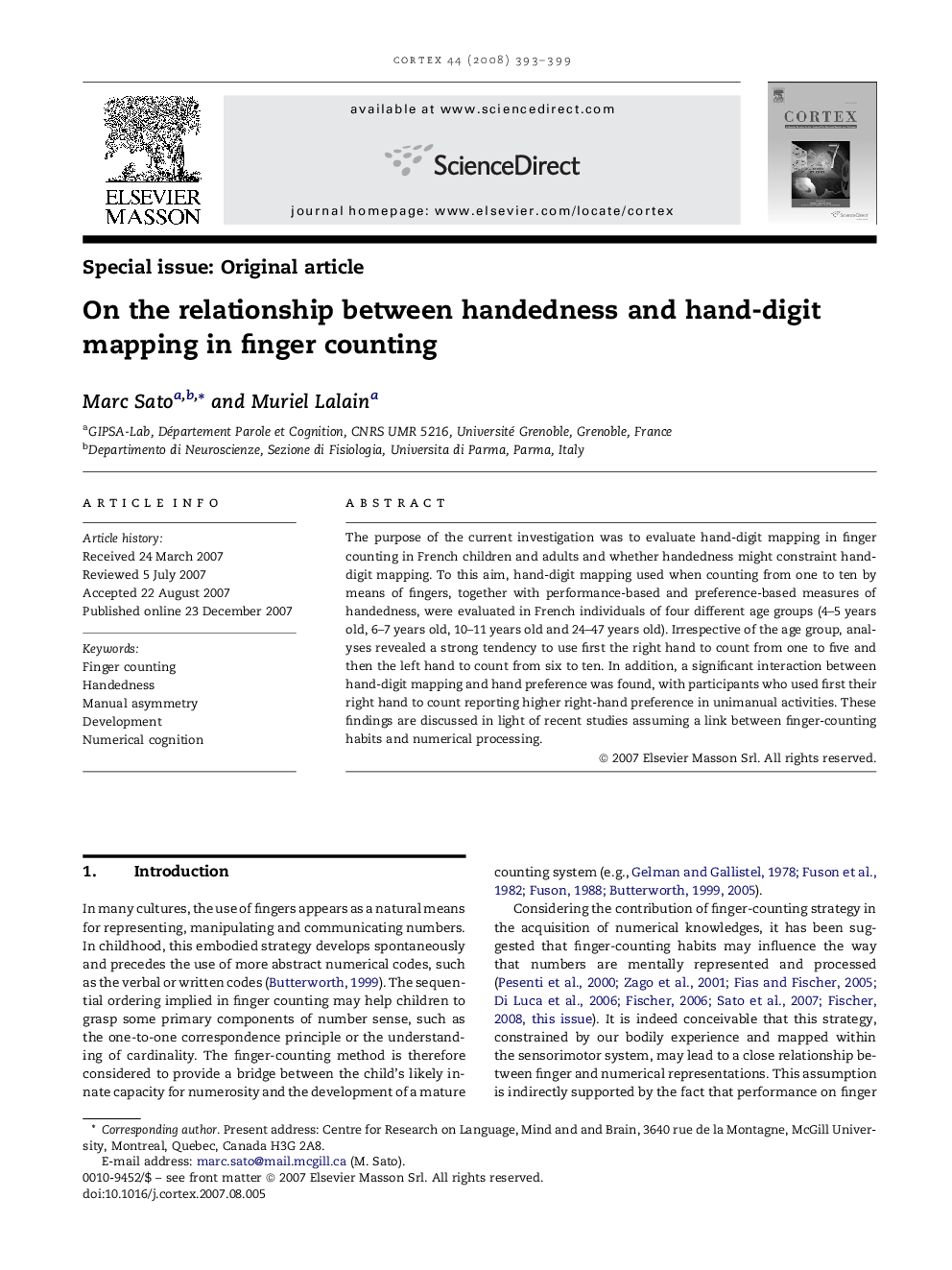| Article ID | Journal | Published Year | Pages | File Type |
|---|---|---|---|---|
| 942831 | Cortex | 2008 | 7 Pages |
The purpose of the current investigation was to evaluate hand-digit mapping in finger counting in French children and adults and whether handedness might constraint hand-digit mapping. To this aim, hand-digit mapping used when counting from one to ten by means of fingers, together with performance-based and preference-based measures of handedness, were evaluated in French individuals of four different age groups (4–5 years old, 6–7 years old, 10–11 years old and 24–47 years old). Irrespective of the age group, analyses revealed a strong tendency to use first the right hand to count from one to five and then the left hand to count from six to ten. In addition, a significant interaction between hand-digit mapping and hand preference was found, with participants who used first their right hand to count reporting higher right-hand preference in unimanual activities. These findings are discussed in light of recent studies assuming a link between finger-counting habits and numerical processing.
